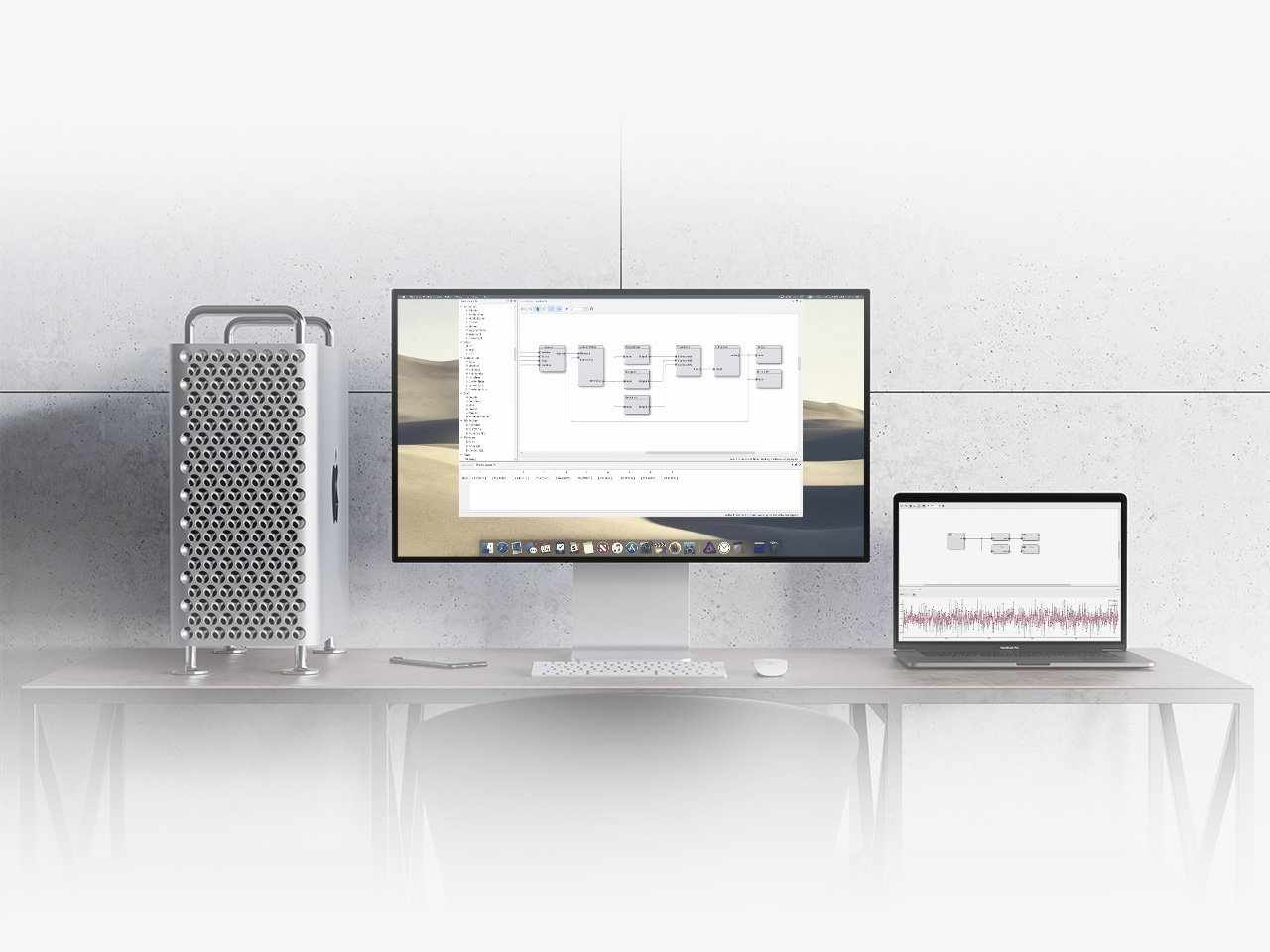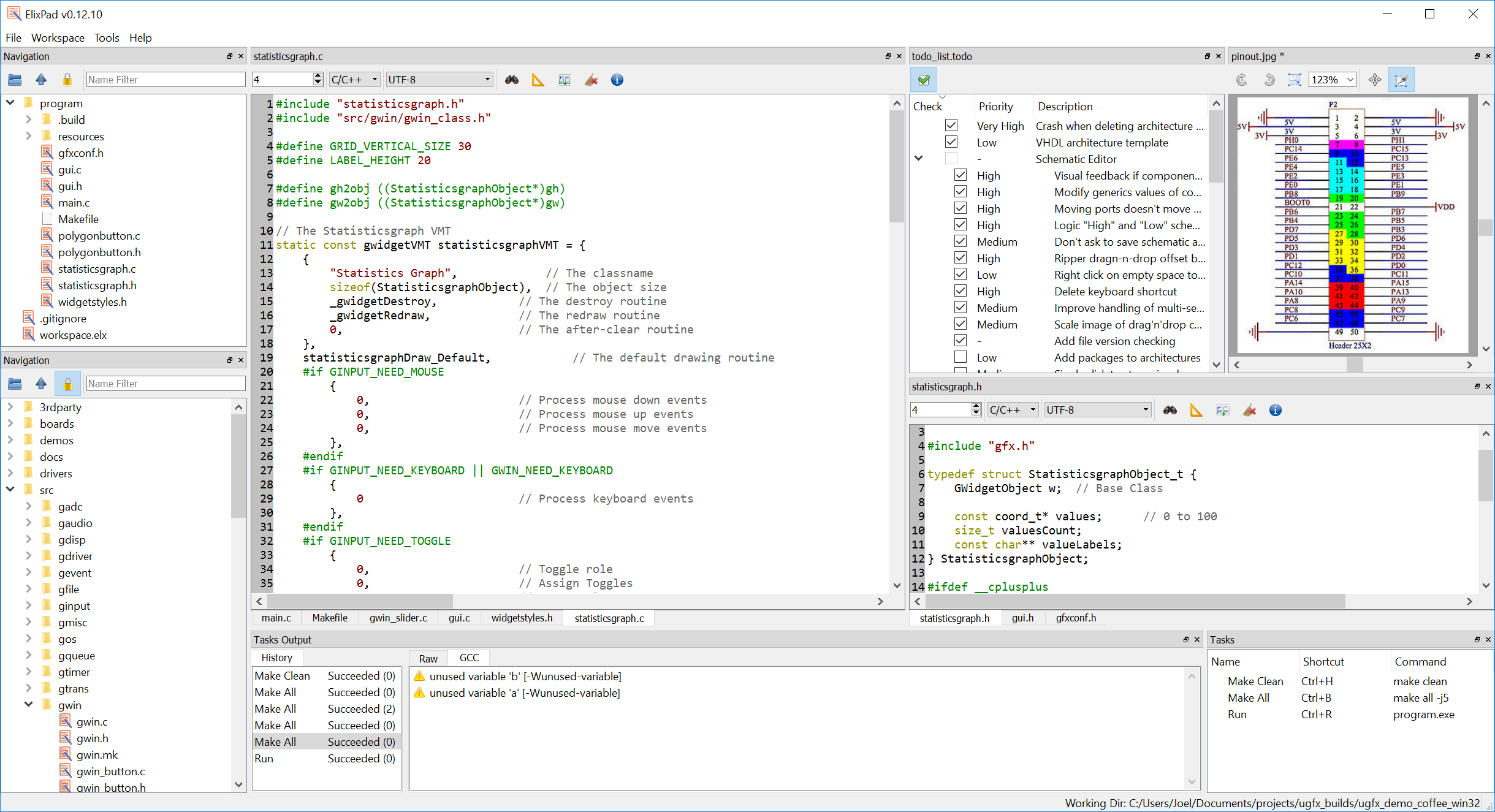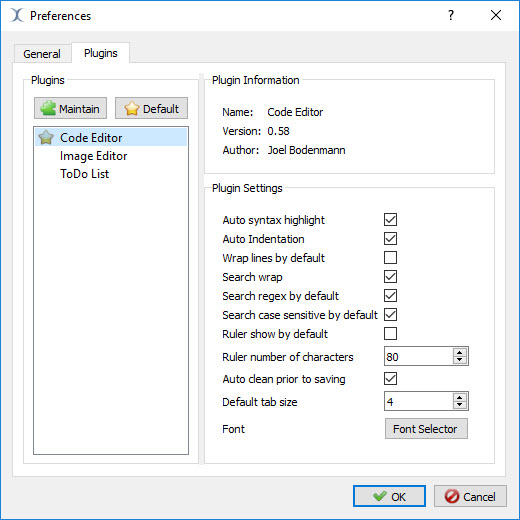Tiling Window Manager
Run Tasks
Most IDEs offer some sort of interface for executing tasks, such as launching a compilation. However, usually these interfaces are very application specific. Simulton offers a lot more flexibility here through the very generic task interface. You can run any task that you want. All it does is executing a process on the system. This way any task can be accomplished:
- Launching a compilation process
- Launching a code generator
- Starting a web-browser
- Copying files to an FTP server
- Rendering something
- Calling a Makefile
- Anything!
- ...
Workspaces
The main goal of Simulton is to provide one program that can be used for any task: Work on a complex embedded firmware, creating a website or just making a grocery list. The way that Simulton achieves that is by providing a well designed plugin interface and by giving the user complete and unconditional control over the layout. However, having one application for everything means that the user needs to be able to save and restore the state of the application quickly & easily. For this, Simulton provides workspace files. Unlike competitive products like Eclipse, Simulton workspaces consist of only one workspace file which is a single JSON file. No directory hierarchy, no hidden files, just one plain JSON file.
Plugins
The Simulton core itself doesn't know about file contents. All it does is providing the file management backend and a plugin manager. Everything else is done by plugins such as the code editor, the image editor, a ToDo list editor and many more.
Each plugin brings its own set of settings with it.
Image Editor
A plugin to view images, rotate and crop them.
ToDo List
A dead simple yet highly flexible ToDo list.
Navigation
A plugin presenting a navigation tool window for file handling.
Tasks
Create and launch tasks to perform any kind of job.
Use something you like
Professionals require a lot from their software. But each person has different needs. Simulton offers flexibility on a whole new level, so why should it run on just one operating system?
-
Windows
-
Coming Soon
Linux
-
Coming Soon
MacOS
-
Coming Soon
FreeBSD




